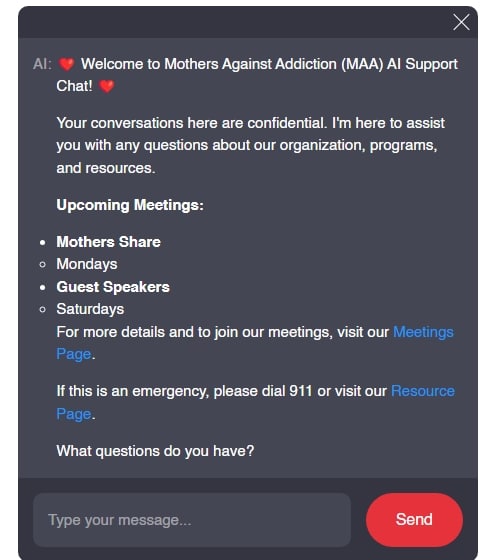Crying is often viewed as a natural way to express emotions. Yet, many of us find ourselves wrestling with the question, “Why can’t I cry?” This struggle can feel isolating, particularly for parents grappling with the heartache of watching a child battle addiction or mourning the loss of a loved one to this relentless disease. By examining the underlying reasons behind our tears—or lack thereof—we can unearth valuable insights into our emotional well-being and the shared experiences within our communities.

## Why Can’t I Cry? Understanding the Hidden Struggles
To start, let’s delve into the science behind tears. Believe it or not, there are three types of tears: basal, reflex, and emotional. Emotional tears are particularly linked to our mental state and can release endorphins and stress hormones. Interestingly, research from the University of Minnesota reveals that the inability to cry often correlates with a disconnect from emotions, a phenomenon many experience while navigating the painful realities of addiction.
When a parent sees their child struggling, that tension can lead to emotional paralysis, leaving them wondering, “Why can’t I cry?” This emotional numbness is common in those who feel overwhelmed, as it becomes a protective measure against the pain. The body may simply shut down as a defense mechanism, making tears seem elusive.
Ultimately, understanding the science behind tears can help reveal why some can cry freely while others just can’t seem to find those tears, especially during deep emotional turmoil.

2. The Emotional Spectrum: Why Do I Cry So Easily?
Conversely, you might find yourself asking, “Why do I cry so easily?” Some individuals shed tears readily, sometimes in situations that barely faze others. Heightened sensitivity can stem from various factors—upbringing, personal experiences, or even genetic disposition. For example, the American Psychological Association indicates that strong empathy often leads to increased emotional responses.
Parents who grew up in nurturing environments may feel more deeply in response to others’ struggles. However, traumatic experiences can also heighten sensitivity, exposing emotional vulnerability. This emotional spectrum offers a rich canvas for understanding human emotions, revealing that crying isn’t a uniform reaction; instead, it varies widely among individuals.
Understanding these emotional differences can foster compassion for oneself and others, especially in difficult situations.
3. Societal Pressures and Emotional Suppression
Societal expectations can heavily influence our emotional expressions. Many cultures still propagate the belief that showings of sadness equate to weakness. According to a Pew Research Center survey, a staggering 55% of individuals believe expressing emotions is a sign of fragility. This cultural stigma often leads to the suppression of tears, especially among men, who face additional pressure to conform to traditional masculine norms.
Men may find themselves grappling with feelings of inadequacy for not adhering to stoic ideals. More importantly, this pressure can culminate in emotional numbness, leaving many wondering “Why can’t I cry?” Acknowledging that emotional expression varies and isn’t a weakness can create pathways for healthy conversations and connections, especially for parents facing the complexities of addiction in their children.
By addressing these societal pressures and expectations, we can foster environments that encourage emotional expression rather than suppress it.
4. The Role of Mental Health Conditions
Mental health conditions can significantly affect emotional expression. Depression can create feelings of numbness, isolating individuals from vulnerability. Similarly, anxiety might lead to an overwhelming fear that can stifle emotional release, leaving one to ask, “Why can’t I cry?” Cognitive-behavioral therapy (CBT) can offer significant benefits, guiding individuals through techniques to reconnect with their feelings over time.
Moreover, conditions like PTSD often render individuals trapped in emotional disconnection, unable to shed tears even in the most profound poignant moments. Through therapy and support, there’s hope. Emotional reconnection allows us not just to cry but to feel alive again.
Recognizing the complexities of these conditions can empower us to seek help and break free from the constraints of emotional suppression.
5. Substance Use and Emotional Disconnection
For those struggling with addiction, emotions paint a more intricate picture. Substance use often acts as a double-edged sword—masking feelings while simultaneously creating a wide chasm between individuals and their emotions. Research from the National Institute on Drug Abuse shows that prolonged use of drugs or alcohol can alter brain chemistry, complicating emotional processing.
When in recovery, these emotional shifts can manifest as sudden and overwhelming crying spells. This can feel like an emotional earthquake after a long period of numbness, leaving many to wonder why these tears surface now. Understanding this emotional evolution is vital—a key aspect in healing as it helps parents and loved ones come to terms with emotional nuances tied to addiction.
Navigating recovery opens avenues for rich emotional expression, inviting parents to bond through shared experiences and understanding.
6. Coping Strategies for Emotional Expression
For those feeling trapped by emotional repression, several strategies can aid in rediscovering those elusive tears and reconnecting with feelings. Mindfulness practices encourage introspection, helping individuals tune into their emotional state. Journaling can serve as a powerful tool, providing a safe space to explore hidden feelings and thoughts that often remain unexpressed.
Artistic outlets can also create pathways for emotional release. Painting, writing, or even engaging in therapeutic activities can help articulate what seems impossible to express verbally. Group therapy, especially with those undergoing similar battles, provides a space of understanding—offering validation while breaking the silence surrounding pain.
Utilizing these coping strategies allows parents and individuals to reclaim emotional agency, fostering both healing and connection.
7. Seeking Help: Break the Silence
Most importantly, it’s crucial to understand that asking for help is a strength, not a flaw. Organizations like Mothers Against Addiction are here to provide that essential support for parents addressing the harsh realities of addiction. Through workshops, community resources, and shared experiences, they foster connections that uphold emotional health and break the isolation many parents feel.
By reaching out, individuals not only confront their own emotional barriers but also pave the way for healthier conversation and community support. These connections can become lifelines, encouraging healing through shared experiences and understanding.
In the end, exploring the emotional struggles behind questions like “Why can’t I cry?” opens up discussions that lead to healing. Recognizing societal pressures, mental health challenges, substance-related emotional confusion, and the importance of emotional expression collectively spotlight the journey toward emotional awareness.
By embracing the complexity of our feelings, we find not only solace but also resilience. Yes, it may take time to reconnect with our tears and emotions. But by leaning into these conversations, we inch closer toward healing and understanding in the difficult narrative surrounding addiction. Together, through support and understanding, we can find the strength to shed those much-needed tears.
Why Can’t I Cry
Crying is a natural response to a variety of emotional states, but sometimes people struggle to shed tears. This phenomenon often ties back to our mental health. Did you know that stress and psychological trauma can make it tough for some folks to express their emotions? In fact, many young adults go through periods where they feel a disconnect from their feelings. It’s a bit like trying to enjoy a vacation at one of those lavish anguilla Resorts but being unable to soak it all in. The emotional blackout can feel isolating, and it’s not uncommon.
The Science Behind It
Interestingly, the brain has amazing mechanisms that control our emotions. Chemicals like dopamine and serotonin play key roles, but sometimes our brains may misfire. If you’re thinking about how to boost your mood or express feelings, consider some good old-fashioned juicing—yes, Juicing Recipes can sometimes bring about a change in mindset! Regular exercise also helps in releasing those happy hormones, allowing for easier emotional expression. When your body’s healthier, your mind often follows suit.
The Stigma and Reality
There’s a societal expectation to show strong emotions like sadness and grief, but if you’re wondering, “why can’t I cry?” you’re in good company. Various factors, such as childhood experiences or fear of vulnerability, may hinder emotional release. You might not think about how laws like the ones covered in the legal Marijuanas States 2025 map impact mental health, especially as more states embrace new approaches to wellness. Plus, understanding terms like agonist And antagonist can be enlightening when looking into treatments—these concepts are often overlooked but central to our emotional landscape when dealing with addiction and recovery (agonist and antagonist( dynamics play a role too).
The struggle is real, but knowing you’re not alone can be comforting. Just like how characters in a gripping story, like those in “Horizon: An American Saga,” face challenges, we too navigate our personal battles. Sometimes, even a moment of reflection on something as whimsical as the animated series featuring Bartholomew Kuma can shed light on how laughter and joy can be essential outlets. So remember, it’s important to seek guidance, and you’re deserving of emotional freedom. You’re not just battling your feelings; you’re on a journey toward healing and self-acceptance.





























